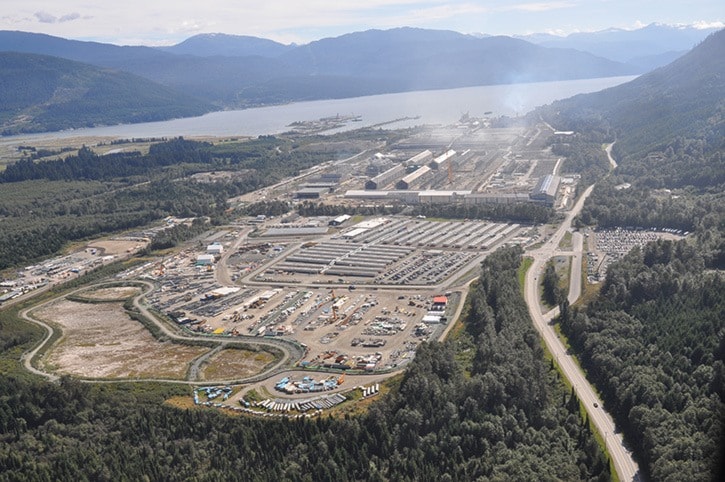Dear Sir:
It’s time to take a much closer look at what may be coming up the valley to us from Kitimat. In his book “40 Years on the Yukon Telegraph,” Guy Lawrence relates how, after the war, it was a battle to keep the telegraph line up near Stewart because of chemical fumes from a nearby copper smelter. The line was constantly corroding and all vegetation was withered, resulting in hundreds of dead trees falling on the line.
Picture that and then fast forward to the present. Understandably there is more environmental controls in effect for corporations today, but what about the cumulative impact of the proposed sulphur dioxide (SO2) increase from the aluminum smelter, the plan for multiple LNG refineries, the possibility of an oil refinery, and a new study that shows oil and gas emissions can create high ozone pollution in rural areas.
Exposure to SO2, a colourless gas that smells like burnt matches, can exacerbate symptoms of asthma and chronic lung or heart disease.
It is particularly dangerous for children, penetrating deeply into lung tissue and damaging it. It also damages trees and crops.
SO2, along with nitrogen oxides (NOx) released from LNG plants, are the main precursors of acid rain, damaging the ecology of lakes and streams, and corroding buildings. Both contribute to climate change.
Oil refineries, besides emitting high levels of SO2 and NOx, expose people to the carcinogen benzene, linked to leukemia, breast cancer and birth defects.
Petroleum coke, classified as a “byproduct” of bitumen oil processing, is a dust loaded with heavy metals and emits more CO2 than coal when burned.
Oil hydrocarbons are known carcinogens and linked to adverse birth outcomes and infant asthma.
If hydrofluoric acid is used as a catalyst in gasoline production in refineries, its accidental release would subject people to immediate lung damage and penetration of the skin causing deep tissue damage and possibly death.
A recent study (Dr. Cora Young et al) shows that pollution from pipeline leaks and storage tanks venting into the atmosphere can concentrate over snow in mountain basins, and sunlight reflecting on the snow can drive ground-level ozone production.
Ozone is a lung damaging pollutant found in smog. Winter ozone can exceed national air quality standards and rival those seen in congested cities like L.A.
So it seems we have a choice: Plan A – prevent industry from turning our airshed into a toxic soup or Plan B – invest in designer pollution masks and make sure our MSP is paid up.
Brenda Mark, Roger Northrup,
Terrace, B.C.
